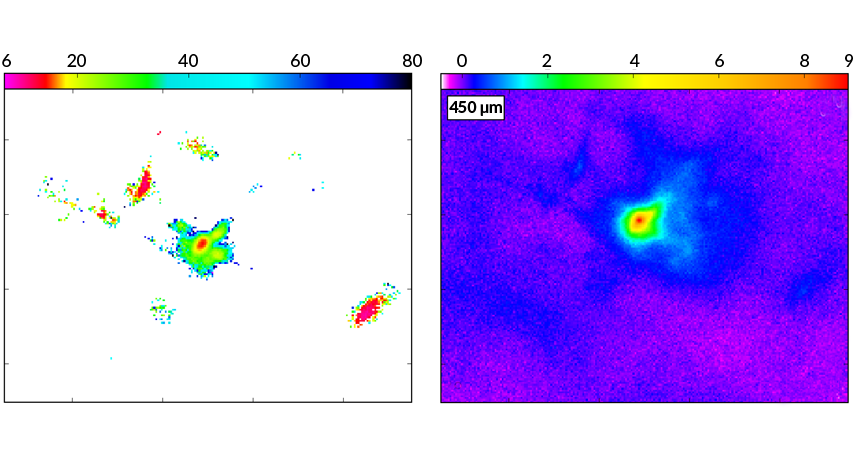Some gas clouds refuse to collapse
Cold dust found near star-forming regions

CLOUD SPOTTING Temperature (left) and brightness, as measured by 450-micrometer radiation (right), revealed dust in a large cloud of interstellar gas. The cold temperatures measured at the cloud’s center indicate the gas has not begun collapsing into a star.
G. Sreenilayam et al/Astronomical J. 2014, reproduced by permission of the AAS






